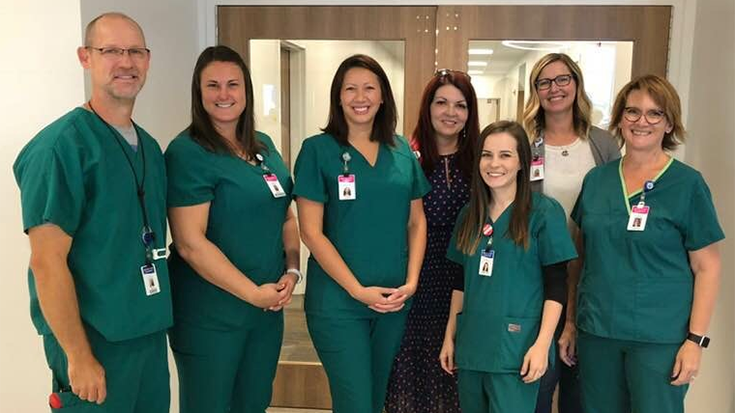
Big hospital systems are taking over the landscape in health care today, and in many of these organizations oversight for clinical departments is consolidated at the corporate level. That’s the case at Intermountain Health Care in Utah, where Carrie Winberg, MSHA, BSRT, RRT, serves as the community hospitals respiratory care director. In this interview, she explains how she got the job and what the role entails —
When did you become an RT and what drew you to the profession?
I started working in 1987 as an on the job trained RT while I was attending school. I initially planned to go into fashion merchandising but considered RT as I was diagnosed with asthma as a child. It was something that I was familiar with and thought that I could make a difference.
What kind of experience did you have in the profession before applying for the community hospitals respiratory care director position?
I started as a staff therapist, then worked in a rural setting for 13 years prior to returning to a trauma facility. I took the position as a night shift supervisor at both a community and then a trauma facility. I am also a member of the RT Adult Team for LifeFlight. In 2010 I became the RT manager at a community hospital. Several years later I was assigned to a second facility to manage and lead and then later co-chair the RCS Adult Critical Care team for the system.
What did it take — experience, education, or credentials — to get the job?
The minimum requirements for this position include a master’s degree and three years of management experience, preferably in an integrated health care system, as well as membership in the AARC. I believe that my experience from rural to trauma provided a unique understanding of the services and skills that are needed for various facilities.
I was presented with the opportunity to work with the System Critical Care team that included MDs, nursing managers, pharmacists, RT managers, and informaticists from the 23 hospitals across the system. I was asked to work with the teams on the ABCDE(F) initiative and the Computerized Mechanical Ventilation Protocols. This allowed me the opportunity to network and meet with various disciplines across the systems. While traveling across the system I was able to better understand the barriers and challenges at the sites and help create solutions for implementation of these initiatives.
What does the community hospital respiratory care director position entail; what are your main responsibilities?
The respiratory care director is accountable for providing leadership for Respiratory Therapy Clinical Services for assigned facilities, and coordination with other clinical services and clinical programs. This includes strategic planning, quality patient outcomes, financial management, marketing, operations, customer relations, quality improvement, regulatory compliance, and personnel staffing and development.
What are the top challenges you face in this RT role and why?
My biggest barrier is the physical distance between the 13 sites. It is difficult to be physically on site to meet with the leaders and the RTs that they support.
What are the biggest rewards that come with having this job and why?
I have the opportunity to work with nine amazing managers who individually have strengths and collectively work together to promote patient and team engagement while implementing best practices/outcomes.
What advice do you have for other therapists who might see an opportunity to work in a similar role — what do they need to bring to the table to get a position like this, and what do they need to think about when determining if this would be a good fit for them?
I think that they need to be adaptable to change and create winning teams while collaborating across the service lines.
Over the course of my career I have had the opportunity to be mentored by wonderful people. Take advantage of what they offer you by learning from their strengths and talents. Be willing to take on additional assignments and say yes to those projects that might not completely align with your current position. They often are the most rewarding and present unique leadership opportunities.





